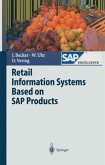Web-Based Shopping Systems (WBSS) are diffusing very
rapidly across national boundaries. This book
attempts to deal with the phenomenon of WBSS
diffusion in different national contexts. In
particular, this book attempts to answer the
following questions: What are WBSS? Are WBSS an
enabler of new business? What kinds of factors
affect the diffusion of WBSS? Are there any
distinguishing characteristics of WBSS diffusion in
different national contexts? How do organizations
tend to enable WBSS diffusion? What kinds of driving
forces influence the extent of WBSS diffusion?
In order to answer these questions, this book
introduces several research models: e.g. a
classification model of WBSS, a research model of
WBSS diffusion, a WBSS strategic planning model and
a decision model relating to key driving forces. On
the basis of these models, this book examines and
explains the phenomenon of WBSS diffusion.
It is hoped that this book will serve as a catalyst
for triggering new research agendas on e-commerce
and ICT innovation diffusion.
rapidly across national boundaries. This book
attempts to deal with the phenomenon of WBSS
diffusion in different national contexts. In
particular, this book attempts to answer the
following questions: What are WBSS? Are WBSS an
enabler of new business? What kinds of factors
affect the diffusion of WBSS? Are there any
distinguishing characteristics of WBSS diffusion in
different national contexts? How do organizations
tend to enable WBSS diffusion? What kinds of driving
forces influence the extent of WBSS diffusion?
In order to answer these questions, this book
introduces several research models: e.g. a
classification model of WBSS, a research model of
WBSS diffusion, a WBSS strategic planning model and
a decision model relating to key driving forces. On
the basis of these models, this book examines and
explains the phenomenon of WBSS diffusion.
It is hoped that this book will serve as a catalyst
for triggering new research agendas on e-commerce
and ICT innovation diffusion.








